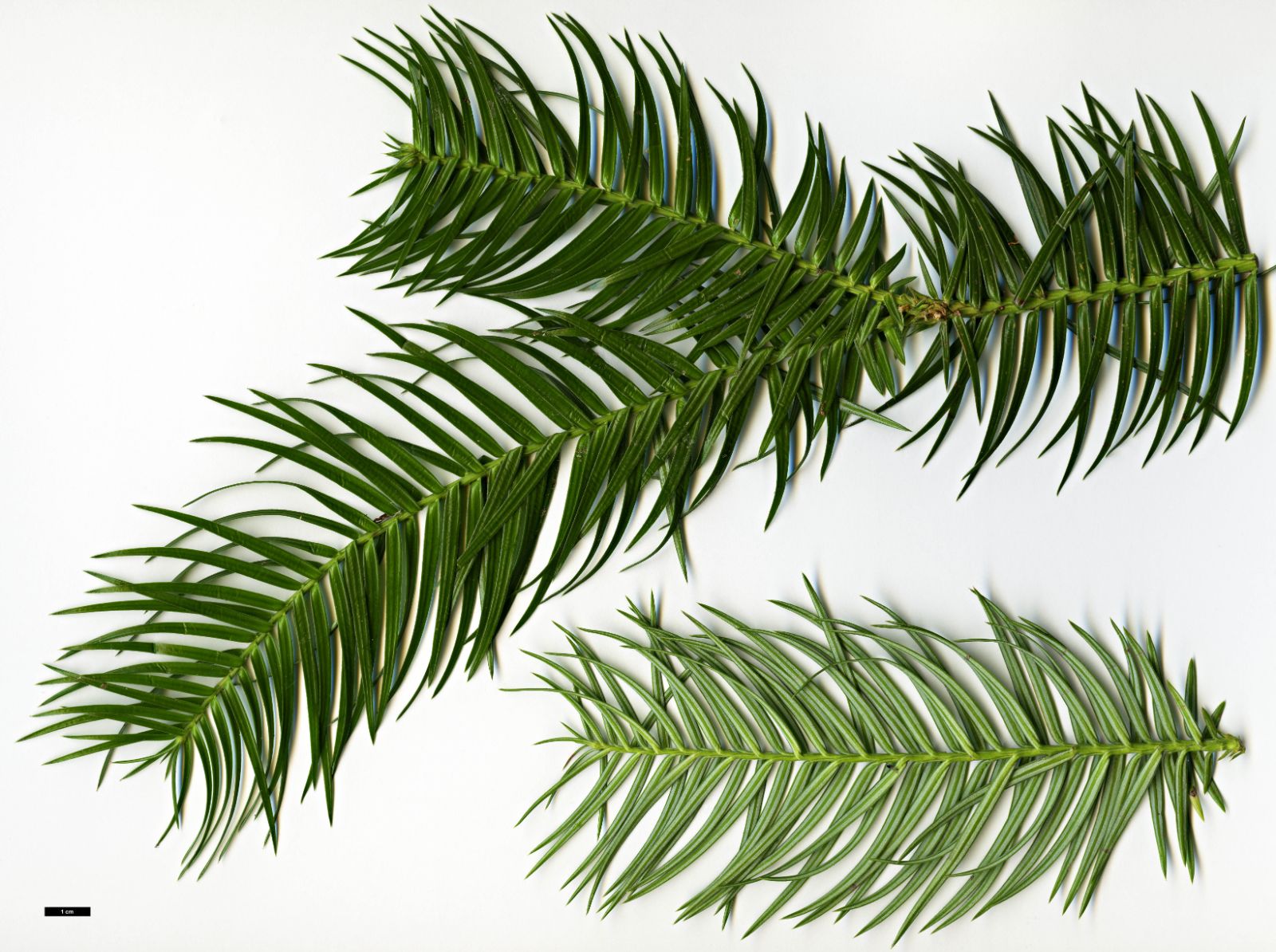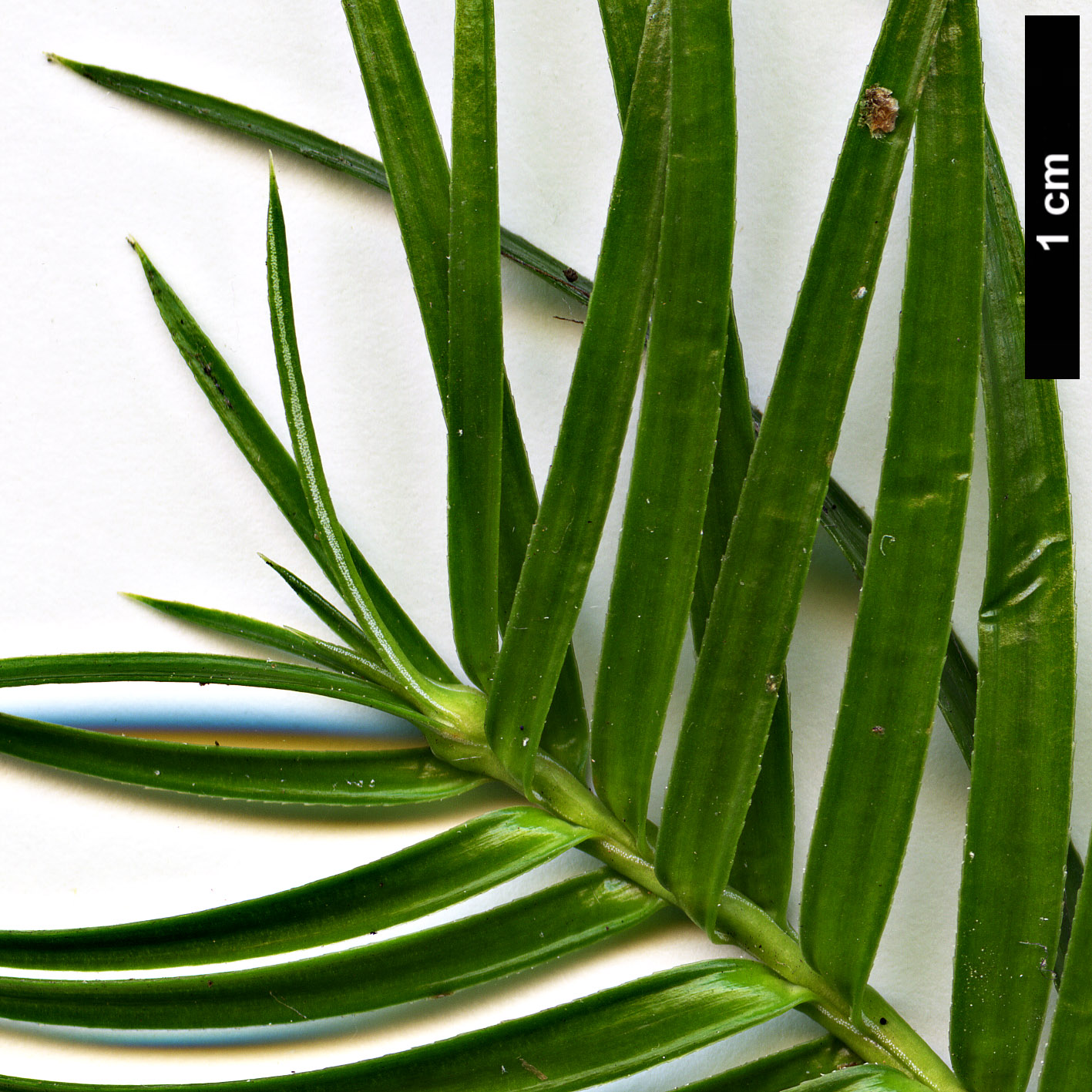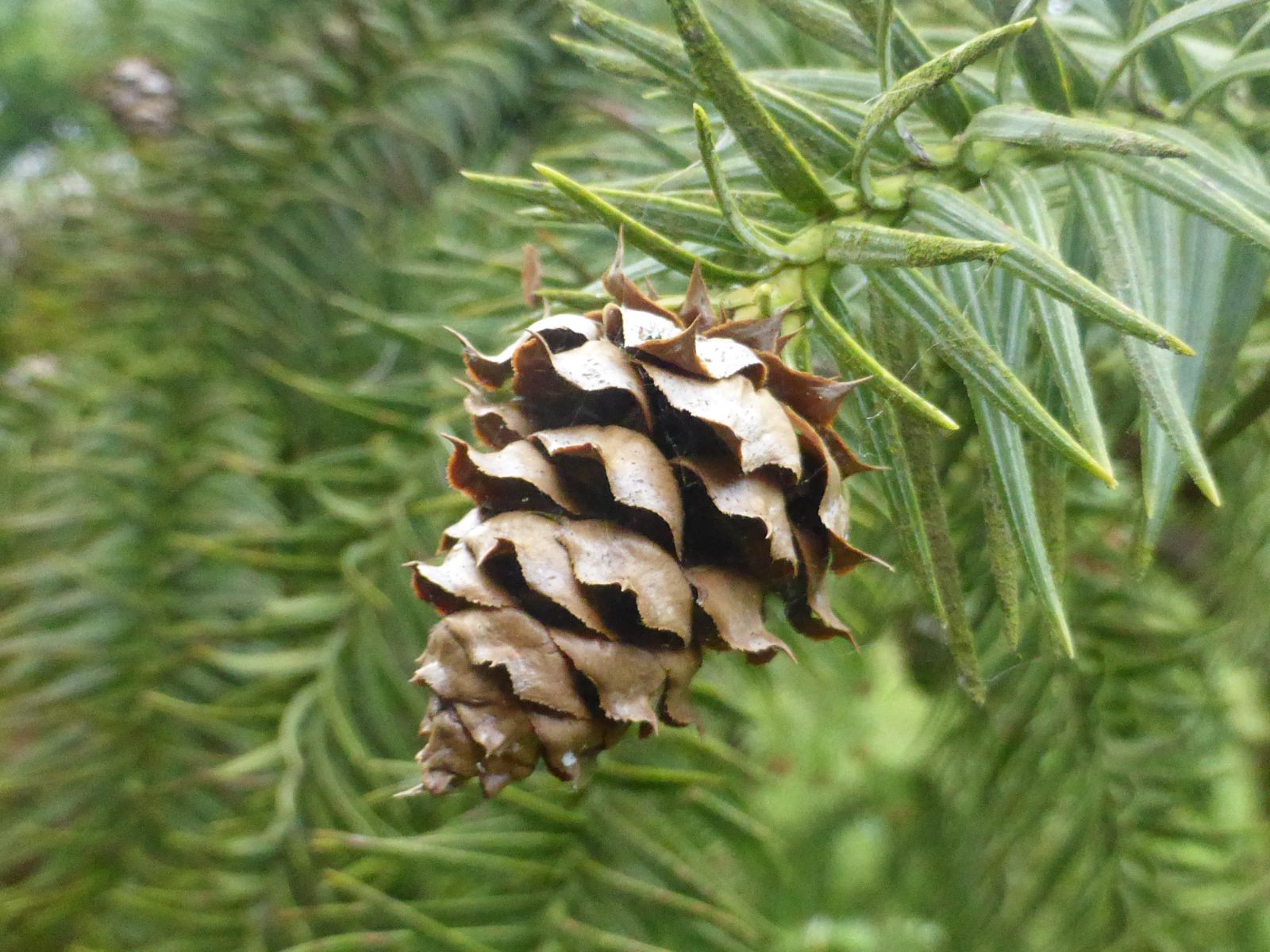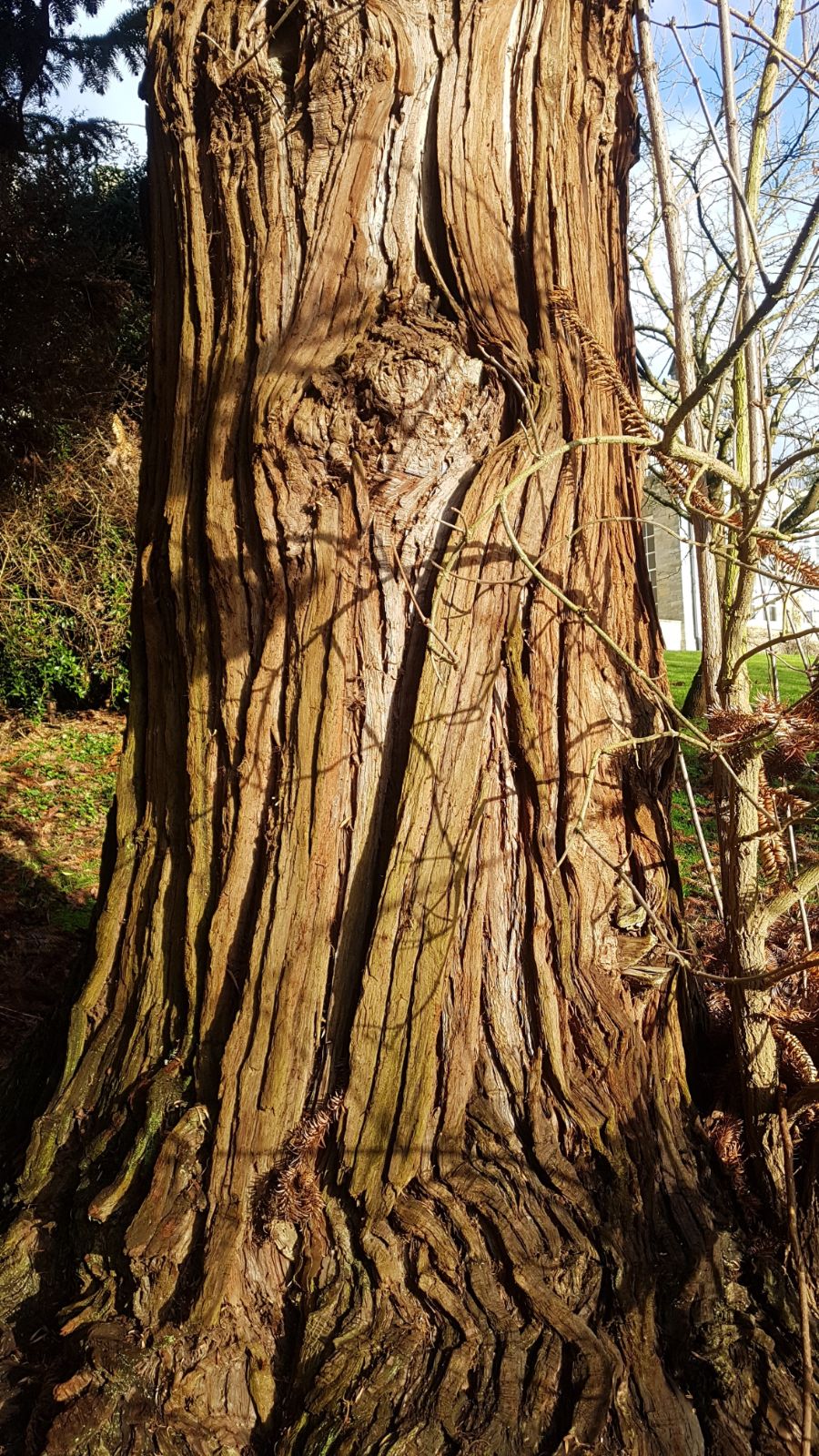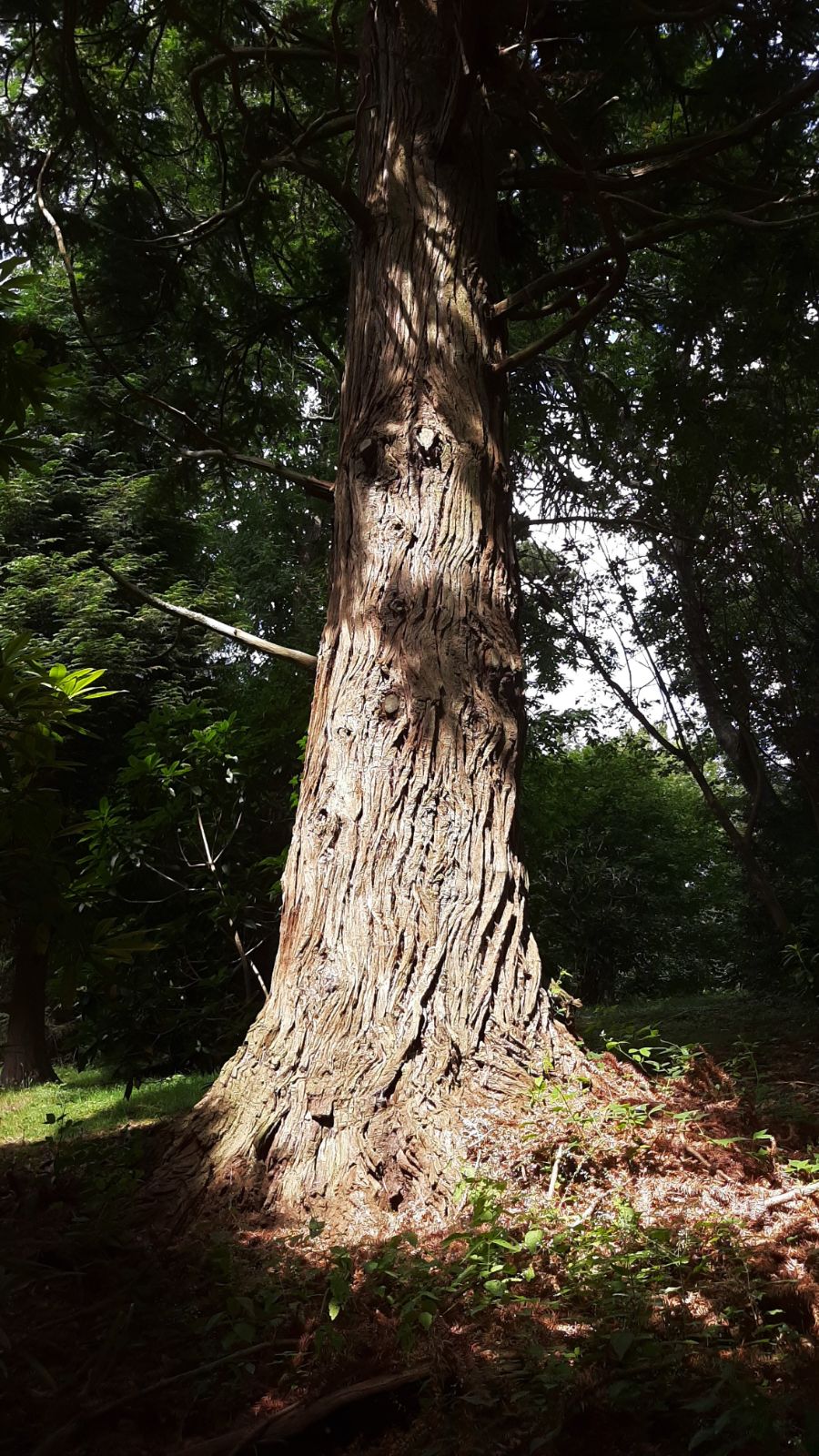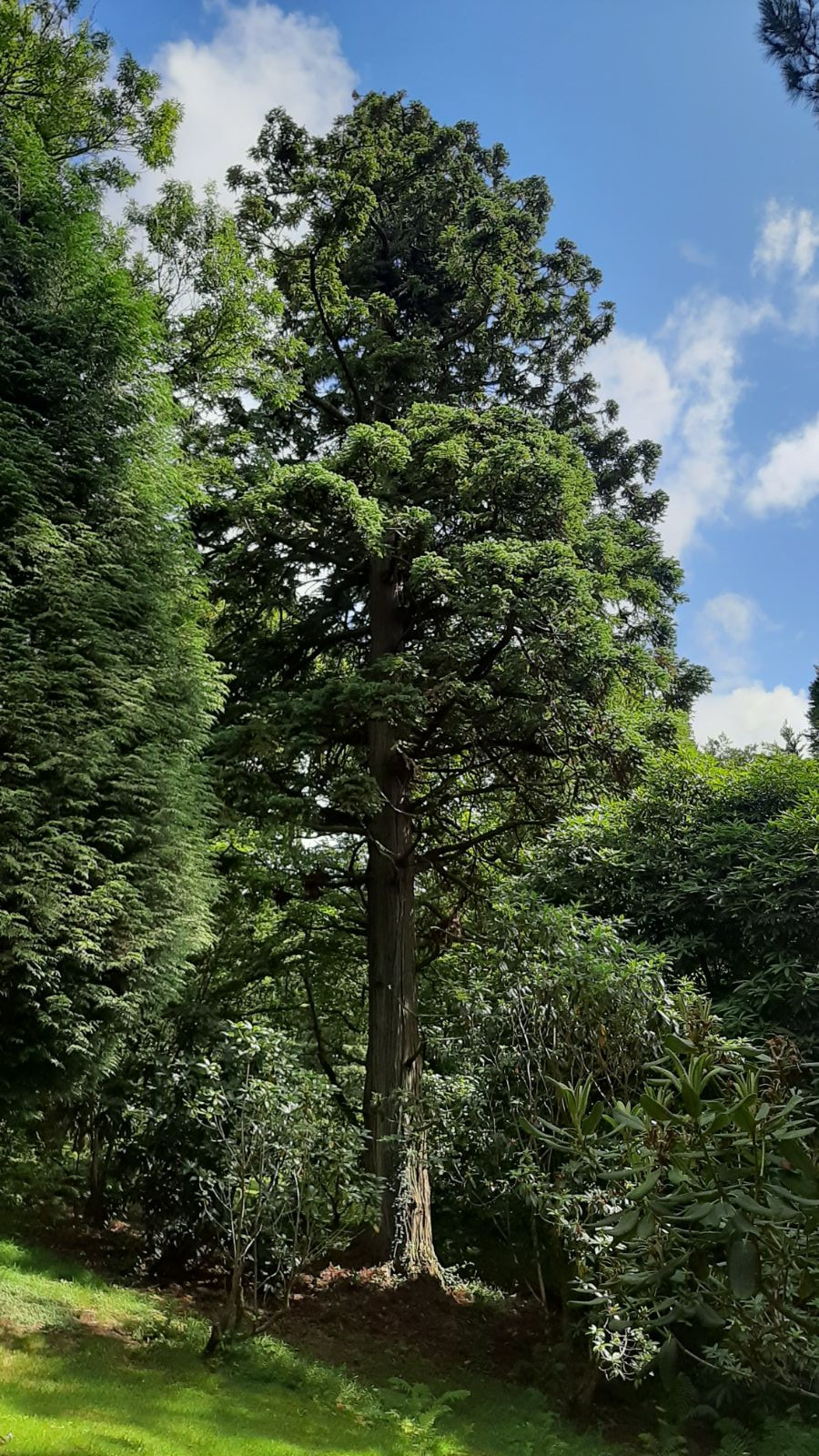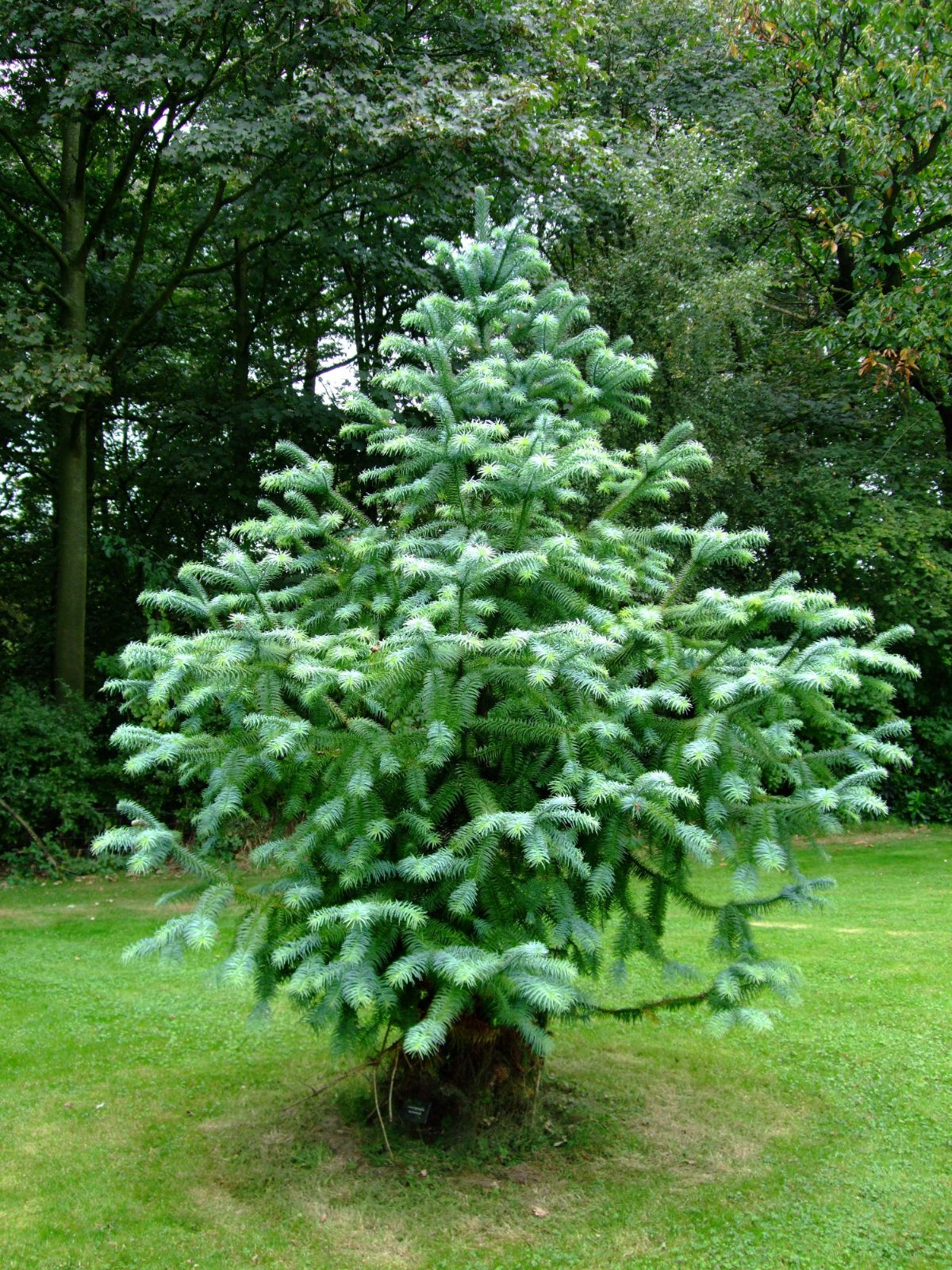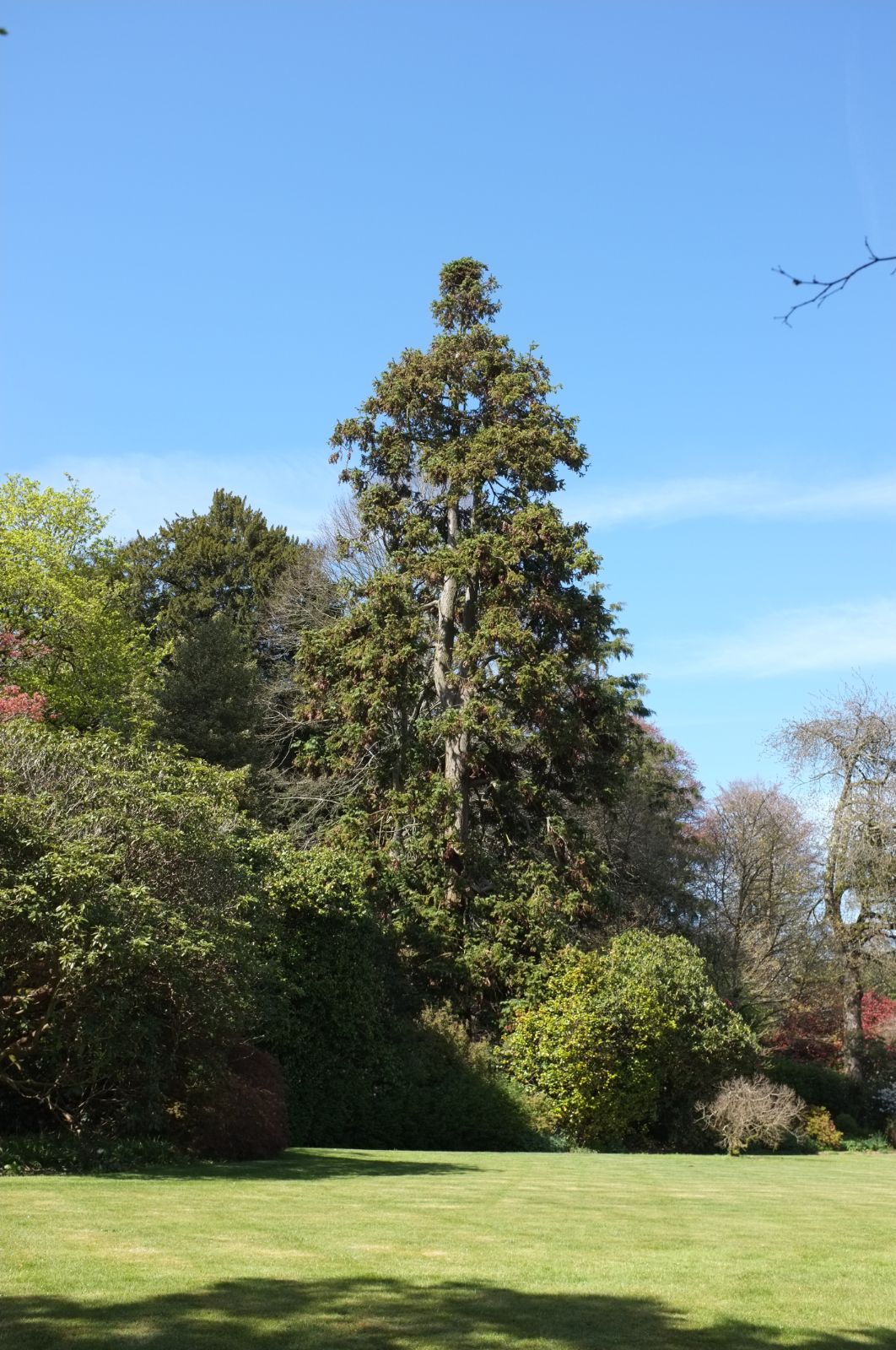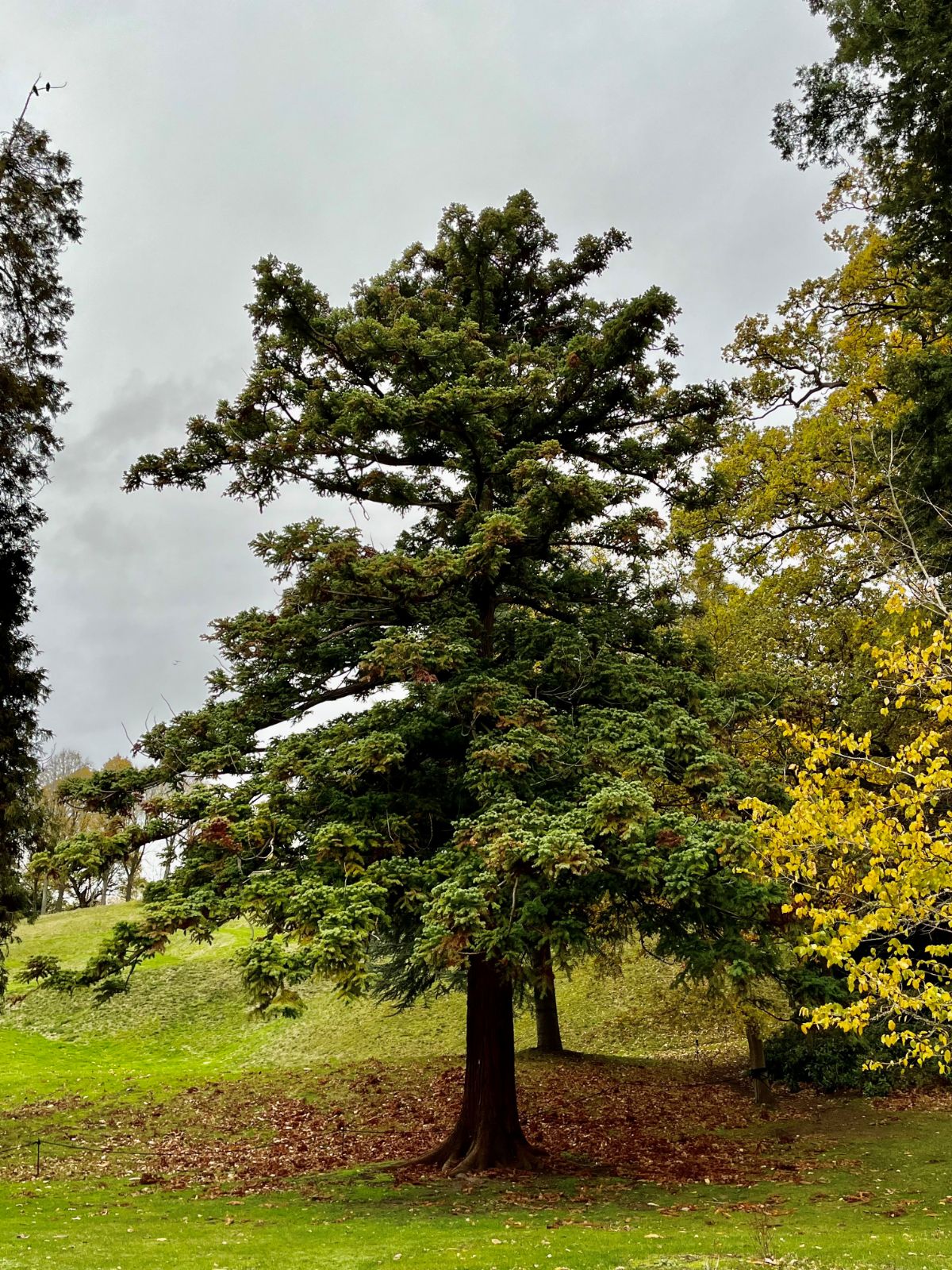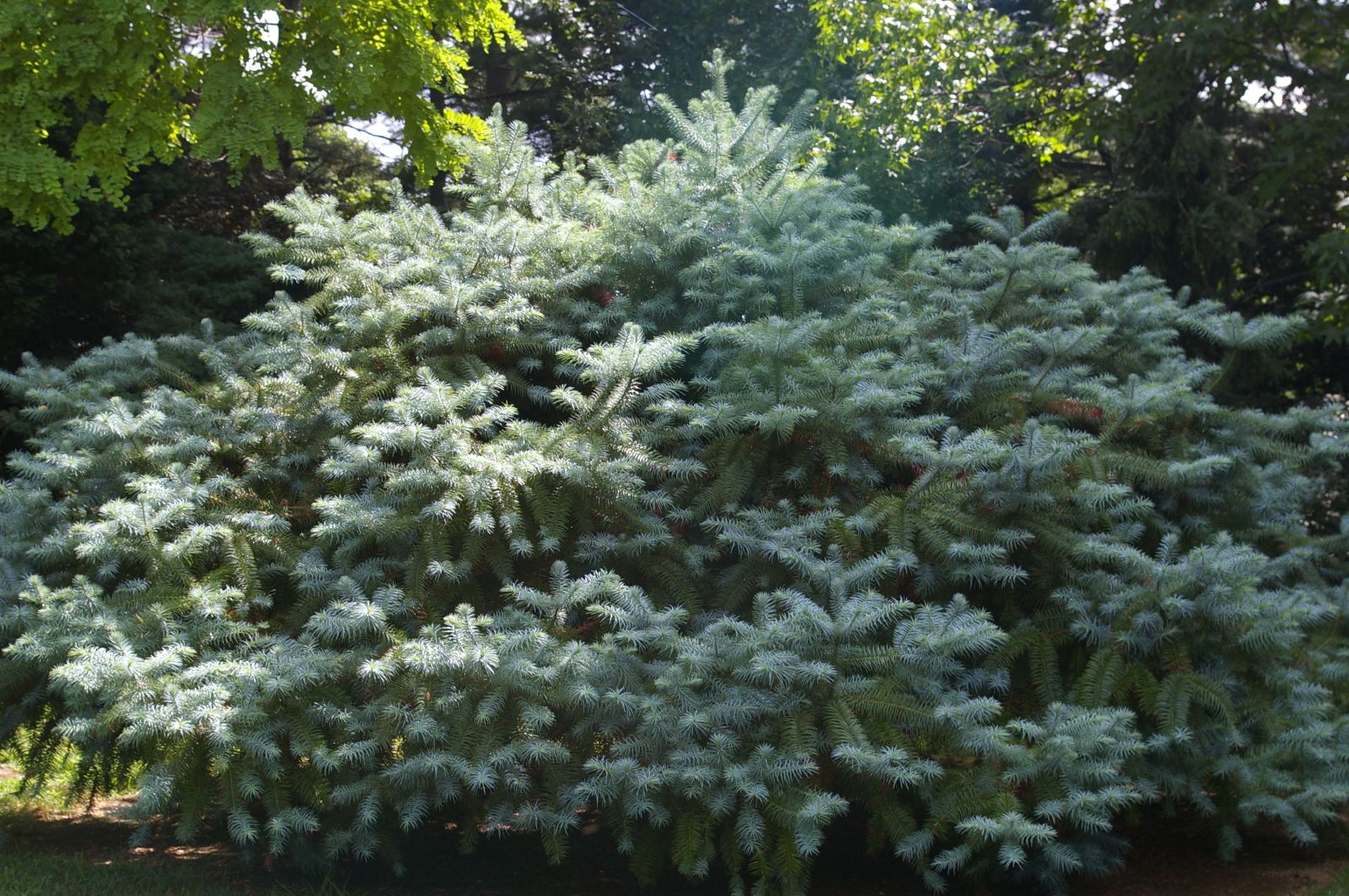Cunninghamia lanceolata
Credits
Article from Bean's Trees and Shrubs Hardy in the British Isles
Recommended citation
'Cunninghamia lanceolata' from the website Trees and Shrubs Online (treesandshrubsonline.
Genus
Synonyms
- Pinus lanceolata Lamb.
- Cunninghamia sinensis Rich.
An evergreen tree up to 150 ft high in a wild state, and up to two-thirds as high in Britain, with a scaling bark; young wood hidden on the upper side by the bases of the densely packed leaves, pale green and glabrous beneath. Leaves persistent about five years, springing equally from all round the stem, but twisted at the stalkless base so as to come into two opposite, spreading, horizontal ranks; they are linear-lanceolate, 1 to 21⁄4 in. long, 1⁄12 to 3⁄16 in. wide; minutely toothed, tapered to a long, fine point; dark glossy bluish green above, with a broad stomatic band beneath along each side the midrib. Cones roundish, rather broader than long, about 11⁄2 in. wide; scales broadly ovate, with an abrupt, slender point, and irregularly toothed margins.
Native of China; introduced to Kew by William Kerr in 1804. In general appearance it bears considerable resemblance to the araucarias, especially to A. angustifolia. It represents one of the world’s most ancient types of vegetation, a very similar plant being found in a fossil state.
The trees mentioned in previous editions as the best in the early years of this century still exist. They are: Killerton, Devon, about 68 × 4 ft (1913), now 79 × 73⁄4 ft (1959); Bicton, Devon, 56 × 43⁄4 ft (1908), now 102 × 71⁄2 ft (1964); Pencarrow, Cornwall, pl. 1850, 40 × 43⁄4 ft (1908), now 79 × 81⁄2 ft (1957); Claremont, Surrey, pl. 1819, 36 ft (1913), now 52 × 61⁄4 ft (1965). Other trees of size are: Trebah, Cornwall, 80 × 71⁄4 ft (1959), and Longleat, Wilts., 76 × 61⁄4 ft (1963). C. lanceolata reaches its best dimensions in the rainier parts of the country, but it has grown well in the National Pinetum in Kent where a tree planted in 1925 is now 47 ft high (1963); at Benenden, in the same county, there is a specimen 59 ft high.
From the Supplement (Vol. V)
specimens: National Pinetum, Bedgebury, Kent, 59 × 51⁄2 ft (1980); Benenden House, Kent, 62 × 43⁄4 ft (1979); Claremont, Surrey, 64 × 63⁄4 ft (1979); Beechlands, Sussex, 50 × 5 ft in 1907, since cut back and 50 × 71⁄4 ft (1981); Sheffield Park, Sussex, 66 × 73⁄4 ft (1979); Longleat, Wilts., 82 × 61⁄4 ft (1971); Tottenham House, Wilts., 50 × 81⁄4 ft + 43⁄4 ft (1977); Killerton, Devon, 85 × 81⁄4 ft (1983); Bicton, Devon, 100 × 81⁄4 ft (1977); Escot, Devon, 80 × 81⁄4 ft (1982); Pencarrow, Cornwall, 82 × 83⁄4 ft (1975); Trebah, Cornwall, 85 × 73⁄4 ft (1984); Scorrier House, Cornwall, 56 × 51⁄2 ft (1979); Glendurgan, Cornwall, 64 × 81⁄4 ft (1984); Oakley Park, Shrops., 70 × 61⁄2 ft (1978); Powerscourt, Co. Wicklow, Eire, 36 × 4 ft in 1931, now 60 × 53⁄4 ft (1980); Mount Usher, Co. Wicklow, Eire, 67 × 81⁄2 ft and 67 × 71⁄2 ft (1975).
'Glauca'
Curiously omitted by Bean (1976) this brightly glaucous cultivar is said to have been known since 1855 (Auders & Spicer 2012), but details of its origins are elusive. Perhaps a clue is that it was originally published as C. [sinensis] var. glauca Knight & Perry (Krüssmann 1985), presumably linking it to the Knight and Perry Nursery in Kings Road, Chelsea. Ultimately having the habit of a normal tree it is said to start more compact and bushy, reluctant to form a leader (Auders & Spicer 2012), and these and other authors (e.g. Krüssmann 1985) also state that it is hardier than normal.
Although this is supposed to be a single cultivar, specimens with more than averagely glaucous foliage are also often seen among unselected C. lanceolata.



